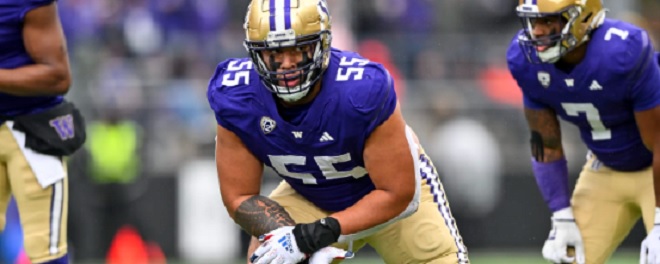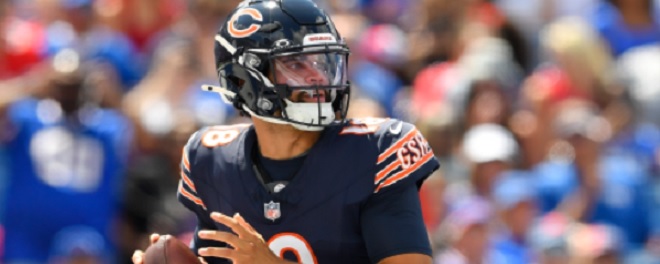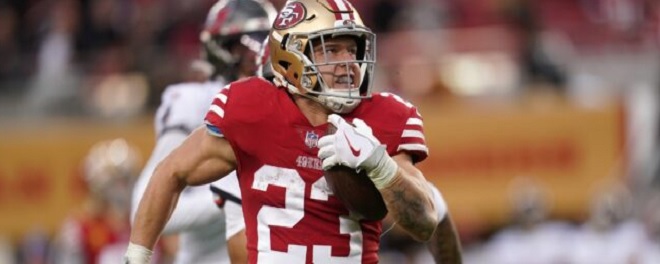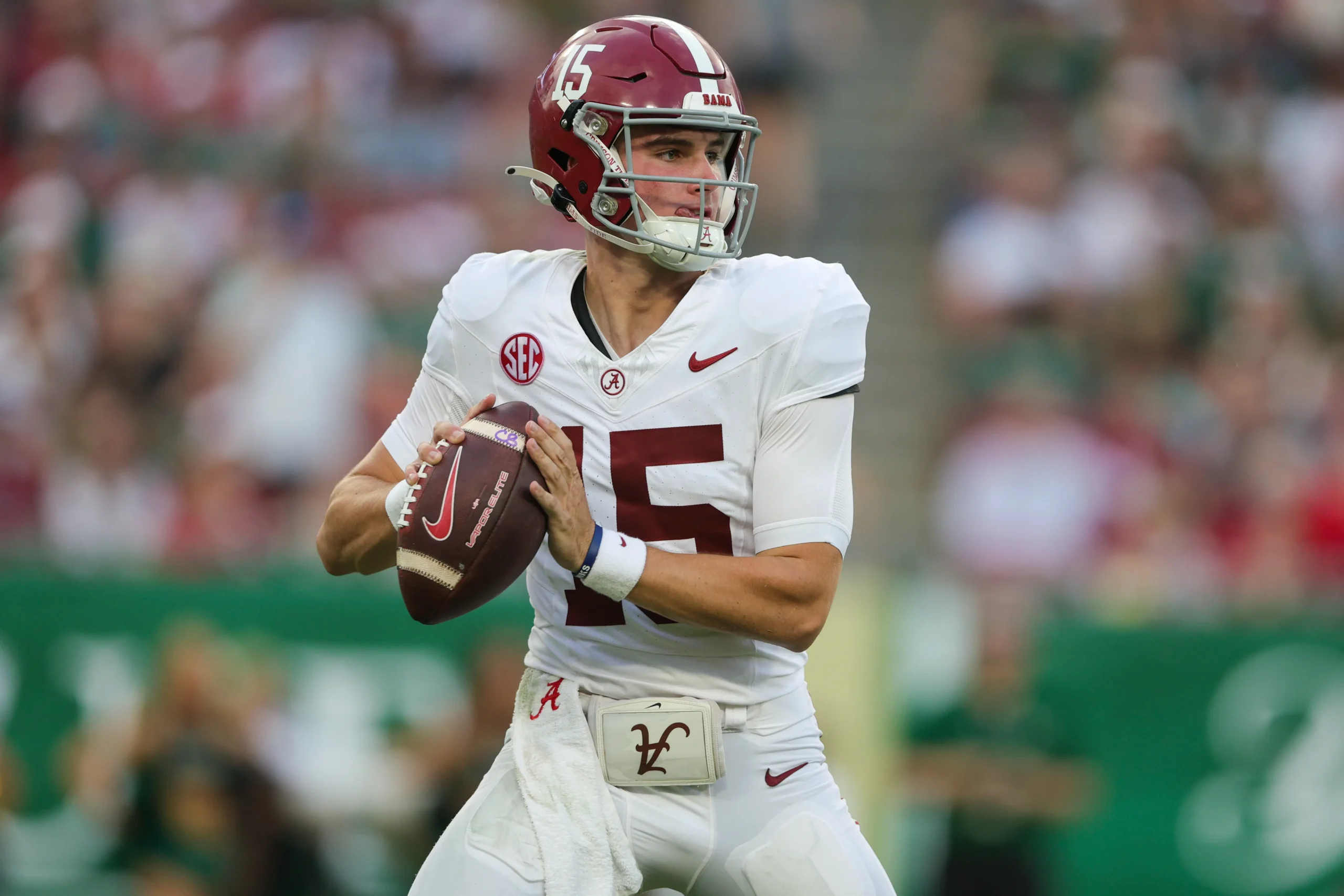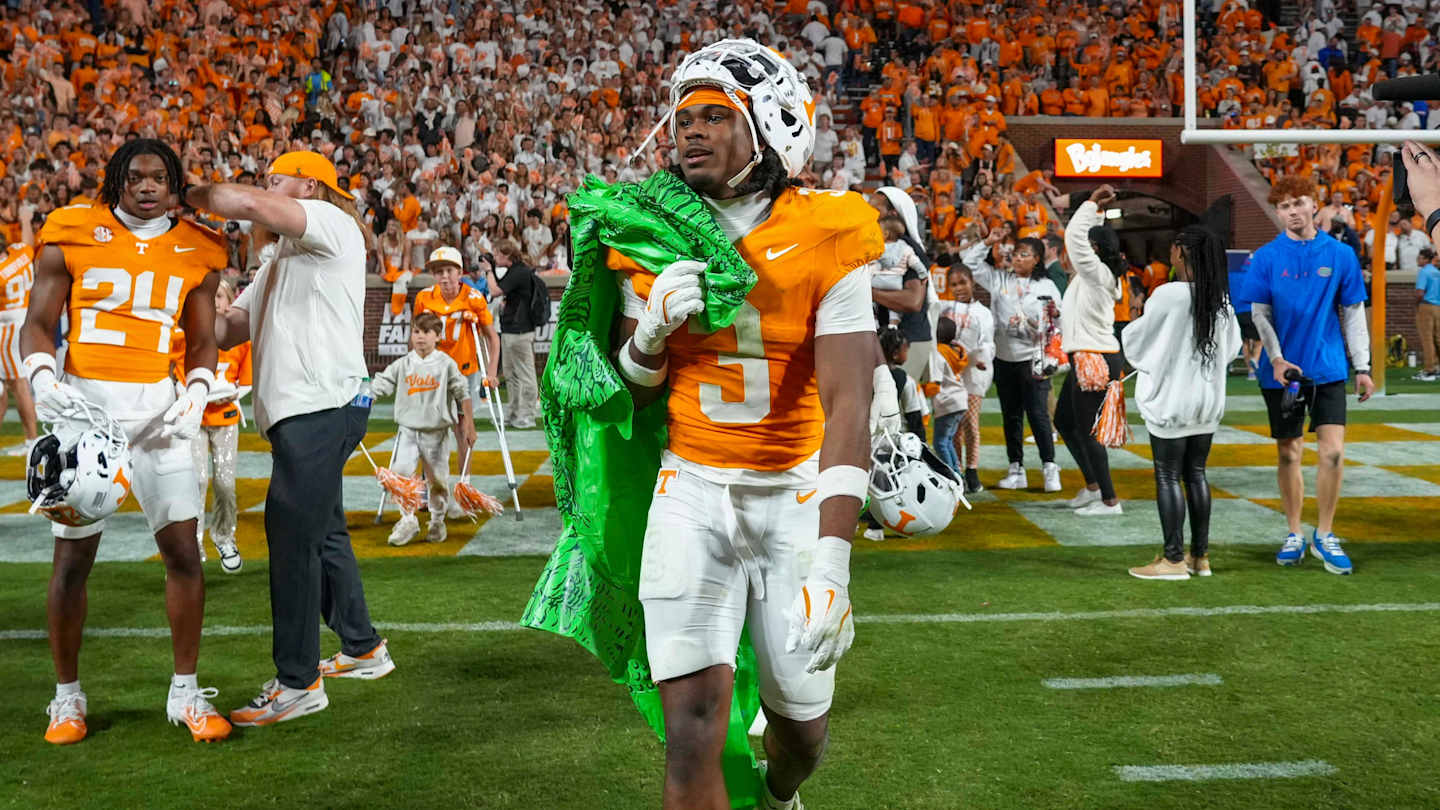Interior Offensive Lineman Class
Early-round talent: A-Mid-round: B+
Late-round: B-
Overall grade: B+
Merging the 2023 and 2024 prospects
Peter SkoronskiTaliese Fuaga
Troy Fautanu
Jackson Powers-Johnson
Graham Barton
Steve Avila
Matthew Bergeron
Cooper Beebe
Layden Robinson
Joe Tippman
Cody Mauch
Zach Frazier
John Michael Schmitz
O’Cyrus Torrence
Juice Scruggs
Zak Zinter
Just to be clear, this article and series is all my opinion based off my own study and information I’ve gotten from general managers, directors of college scouting, national scouts, area scouts and NFL coaches. They all know way more than I do.
Last year, the interior offensive line class was strong in terms of early-round talent, but this year is even better. The 2024 NFL Draft has a lot of good options for the first round and some second-day depth as well. It looks like an excellent year to select an interior offensive lineman on the first two days of the draft.
If you were to merge the two classes together, Skoronski would be the best prospect with a slight edge over Taliese Fuaga. Troy Fautanu, Jackson Powers-Johnson and Graham Barton all have a shot at going in the first round of the 2024 NFL Draft and are better prospects than Steve Avila. Cooper Beebe and Layden Robinson are not as good of prospects as Matthew Bergeron, but they are better than other second-rounders like Joe Tippman and Cody Mauch. Zach Frazier is comparable to John Michael Schmitz. Zak Zinter is not as good of a prospect as Juice Scruggs.
Safest Pick: Jackson Powers-Johnson, Oregon 
Previous Picks:2023: Peter Skoronski
2022: Kenyon Green
2021: Alijah Vera-Tucker
2020: Tristan Wirfs, Cesar Ruiz
2019: Cody Ford, Eric McCoy
2018: Quinton Nelson, Billy Price
2017: Forrest Lamp
2016: Sebastian Tretola, Nick Martin
2015: Brandon Scherff, Cam Erving
2014: Xavier Sua’Filo, Weston Richburg
2013: Chance Warmack, Barrett Jones
This was a tough choice because there were a lot of good options like Taliese Fuaga and Troy Fautanu. However, of all of them, I think Powers-Johnson is the safest. With his power, size, and athletic ability, it would be shocking if he didn’t turn into a solid starter at guard or tackle. Fuaga and Fautanu both could have issues that lead to them moving inside in the NFL.
Biggest Bust Potential: Beaux Limmer, Arkansas 
Previous Picks:2023: Broderick Jones
2022: Thayor Munford
2021: Trey Hill
2020: Damien Lewis, Jake Hanson
2019: Ross Pierschbacher
2018: Scott Quessenberry
2017: Pat Elflein
2016: Cody Whitehair, Jack Allen
2015: Jeremiah Poutasi, Hroniss Grasu
2014: Chris Watt, Marcus Martin
2013: Brian Winters, Travis Fredrick
There have been some projections of Limmer going on the second day of the 2024 NFL Draft, but I think that could be risky. Limmer competed hard at the Senior Bowl, but he has some skill-set limitations and that visible on tape. I think there is a chance that he gets overdrafted and ends up being a disappointment.
Interior Offensive Lineman Rankings by Attributes
Pass Protection:
NFL prototype: Quenton Nelson, Colts
- Troy Fautanu
- Jackson Powers-Johnson
- Taliese Fuaga
- Graham Barton
- Cooper Beebe
- Zach Frazier
- Layden Robinson
- Zak Zinter
Recap: The NFL is a passing-driven league, so keeping a clean pocket as a pass-blocker is the attribute that the majority of teams consider first. Coaches want the guards to keep defensive tackles from gaining penetration or causing disruption. If the guards are successful, quarterbacks can step up in the pocket to avoid edge-rushers. This helps out the offensive tackles significantly. Plus good guard/center play provides better throwing lanes for the quarterback.
There is no doubt that Fautanu is extremely athletic for an offensive lineman. He is a smooth glider with excellent agility and nimble movement skills. Fautanu is very fast firing out of his stance with a burst to the second level. Thanks to his quick feet and agility, Fautanu is able to stay square on speed rushers and neutralize them running around the edge. With his excellent athleticism, Fautanu is a natural knee bender who does not have to reach after edge rushers because his feet and bending get him in proper position. While Fautanu lacks a little height, he does have enough arm length, and that plus length is helpful for him to keep pass rushers at bay. He uses his length to help sustain blocks and tie up defenders.
In pass protection, Powers-Johnson is a steady interior blocker who gets the job done. He executes double teams well with a guard and uses his strong upper body to sustain blocks well. Powers-Johnson has a strong anchor where he can sink his weight and stop bull rushes from collapsing the pocket. In tight areas, Powers-Johnson is difficult to get by because he is quick to engage and hold onto blockers. Powers-Johnson should be a steady and consistent pass protector at the next level.
In pass protection, Fuaga is quick out of his stance and gets in position to wall off defenders. When taking on bull rushes Fuaga gives up little ground and is able to anchor with lower body strength to keep himself from getting pushed into the quarterback. However, Fuaga has short arms, and his lack of length is a problem for taking on pro edge rushers. His feet also get heavy sometimes, and he does not have the feet of a left tackle. That can be a problem at the pro level because NFL defenses will move their best edge rusher around the front, and Fuaga will see plenty of elite players even if he is at right tackle. Fuaga’s feet and lack of length could be problems for him at the pro level. Hence, some teams are projecting Fuaga to move inside to guard for their teams if they draft him.
Barton is generally a good pass protector. He is strong to sustain blocks and has good technique with hand placement. While Barton is not the quickest or fastest with his feet, he does nice job of getting depth in his drop to cut off the edge. He can glide with rushers and keep them from breaking free. With quality size, Barton can sink his weight and stop bull rushers. For the NFL though, Barton should move inside to guard. Speed-to-power rushers give him problems – see the Florida State game with Jared Verse. Barton’s feet and lack of arm length are also issues for taking on pro edge rushers. Hence, he should not stay at left tackle in the NFL, whereas his issues would not be as big of problems at guard.
As a pass blocker, Beebe is polished and is reliable to keep his defender from getting heat on the quarterback. He is smart and adjusts well to games or stunts. Beebe does a quality job of riding defenders around the pocket when they try to beat him with speed. In the NFL, interior speed rushers could give Beebe some issues because he does not have special athleticism and does not stand out for having quick feet.
Frazier is good fit for pass blocking in the NFL. He is capable of blocking defensive tackles in one-on-ones with an excellent ability to sustain blocks. Aided by his strong base, Frazier can sink his weight and stall bull rushes to give his quarterback time to get the ball out. Frazier plays with good leverage and is capable of bending at the knee to move with defenders rather than having to reach after him. There are times when Frazier can get overwhelmed by mass and has problems when speed rushers get on his edges. However in pass protection, Frazier is very reliable overall.
Robinson was a solid and reliable pass protector at Texas A&M. He has strong hands that rock defenders and often knock them off balance to slow them down. Those strong hands also help him to sustain blocks and prevent second efforts from being effective. With good size and strength, Robinson can stop bull rushes. However, Robinson is a limited athlete and lacks foot quickness, so speed rushes could give him some issues and he will have to improve on that for the NFL.
Zinter was a quality pass protector for Michigan during his collegiate career. He has strong hands that rock defenders and often knock them off balance to slow them down. Those strong hands also help him to sustain blocks and prevent second efforts from being effective. However, Zinter has some limitations for the NFL because he has some tightness and is limited athletically. Pro speed rushes will probably give Zinter problems, and he will have to work on that for the next level.
Run Blocking:
NFL prototype: Quenton Nelson, Colts
- Taliese Fuaga
- Layden Robinson
- Jackson Powers-Johnson
- Cooper Beebe
- Graham Barton
- Troy Fautanu
- Zach Frazier
- Zak Zinter
Recap: The interior of the offensive line are the engine of a good running game. They are the most important blockers for opening holes up the middle in addition to pulling or moving on stretch runs. Dominant guards and centers who can open up holes even when defenses know the run is coming provide a mental edge, especially late in games. This is a pretty good class of run blockers.
In the ground game, Fuaga is a load who can knock defenders off the ball and ride them out of their gap. Fuaga engulfs edge defenders and keeps them from flowing to the ball. With his ability to generate movement, Fuaga is an asset in short-yardage and goal-line situations. At the point of attack, Fuaga is nasty, as he will get very physical and violent with defenders. Utilizing heavy hands, Fuaga shocks defenders, and he can manhandle defensive linemen at the point of attack. Fuaga looks to pancake them and is a bully on the field who really beats up opponents. He moves well for his size and is quick to the second level and is a wrecking ball on the perimeter. Fuaga is on a mission to punish defenders in the open field, and he will dish out some violence downfield.
Robinson was a productive run blocker for Texas A&M, which had a lot of success running behind him. He is powerful at the point of attack, possessing strong hands to rock back defenders. With his thick build and upper body, Robinson can drive block and get a push at the point of attack. Robinson is nasty and plays with physical style and demeanor. There are plays on which he can be a dominant bull who blasts open running lanes. However with Robinson being a limited athlete, he can lumber in space and is not a guard who is going to move well around the field. Thus, Robinson is limited in running wide-zone plays at the next level. Those issues also make Robinson a right guard only. With his skill set, he is a better fit for a power-man system rather than a zone-based scheme.
As a run blocker, Powers-Johnson really excels at the point of attack. He is a strong and heavy center who packs a real punch off the ball. Powers-Johnson has the strength to help generate movement and push defenders backward. Powers-Johnson plays with an aggressive demeanor and is physical. If he is moving with guards alongside him, Powers-Johnson is capable of moving to the side on zone runs.
In the ground game, Beebe can generate some movement at the point of attack. He is strong and fires off the ball. With heavy hands and upper body strength, Beebe can knock defenders backward and generate a push at the point of attack. He torques and manipulates defenders to get some openings for his back. He also can get to blocks on linebackers and does a nice job of riding them out of a play when he gets a hold of them.
Barton demonstrates aggression as a run blocker and blocks with a mean streak. He is a throwback who blocks through the whistle, pushes defenders around, buries them into the ground, and finishes them off with violence. Barton has developed strength to push defenders out of their gap and open holes in the ground game. With heavy hands, Barton is able to sustain his blocks after shocking defenders back. He also has enough quickness and athleticism to get to the second level. Barton can pull and would be a fit for either a zone-blocking or power-man scheme.
In the ground game, Fautanu is a good fit for a zone-blocking scheme. With his speed and athleticism, he moves well as part of the moving mall. Fautanu will quickly get to the linebackers off the snap or peel off defensive linemen and then hit a linebacker to help open a hole. While he blocks hard, Fautanu is limited and is not a true bull who can overpower defenders at the line of scrimmage. He fights, but he is not a people mover to drive defenders backward off the ball because he is not real powerful. Fautanu’s body might be maxed out given his height, so he could be limited in being able to add more power and develop a better anchor.
As a run blocker, Frazier routinely opens holes with strength, and he is very tough and physical at the point of attack. Frazier has a wrestling background, which can be seen with his strong hands, excellent hand placement, and ability to tie up defenders. Thanks to the power in his upper body, Frazier can twist, turn and manipulate defenders at the point of attack. Frazier is a scrapper who has a physical attitude and blocks through the whistle. In the NFL, he should be a plus run blocker at center.
Zinter was a steady run blocker for Michigan, which had a lot of success running behind him. He is strong at the point of attack, having the heavy hands to rock back defenders. With his large build and developed upper body, Zinter can drive block and create a push. He does have some issues with bending at the waist at times, and that can limit his push in the ground game. Beyond that issue, Zinter lumbers in space and is not a guard who is going to move well around the field. Thus, he is a better fit as a power-man blocker rather than a zone-based blocker.
Zone Blocking:
NFL prototype: Landon Dickerson, Eagles
- Troy Fautanu
- Taliese Fuaga
- Graham Barton
- Cooper Beebe
- Jackson Powers-Johnson
- Zach Frazier
- Layden Robinson
- Zak Zinter
Recap: The zone-blocking system is run by a number of NFL teams, and the success of the scheme has many power-man teams adding some zone plays into the playbook. The zone scheme calls for guards and centers to have the ability to move well laterally and downfield to help set up moving wall with cut-back lanes. Interior linemen need athleticism and quickness in order to be effective.
Fautanu has excellent speed, athleticism, and agility to move in space. He would be a great fit in a zone blocking scheme as he is agile to get in position and is very fast to the second level. He would be a good fit in a zone scheme.
Fuaga, Barton, Beebe, and Powers-Johnson would be fine fits in a zone blocking scheme. None of them is a dominant athlete or exceptionally fast, but they all have enough quickness and agility to execute zone plays. Powers-Johnson is behind the rest because his athleticism can come unglued in space when he doesn’t have guards running next to him. Frazier, Robinson, and Zinter are more natural fits in a power man scheme.
Power Man:
NFL prototype: Quenton Nelson, Colts
- Taliese Fuaga
- Graham Barton
- Layden Robinson
- Jackson Powers-Johnson
- Cooper Beebe
- Zach Frazier
- Zak Zinter
- Troy Fautanu
Recap: A lot of teams in the NFL run a power man-blocking scheme. Interior linemen for this system need the ability to defeat their defender by blasting open or sealing a running lane. Guards need to have the power to move defenders and sustain blocks, while centers need to be able to contribute in some one-on-ones and execute well on double teams with their guards.
In the ground game, Fuaga is a force at the point of attack who has strong hands and the power to be a drive blocker. Barton is a tenacious blocker who can shock defenders backward and drive them out of their gap. Robinson and Powers-Johnson have the power to knock defenders back and generate movement at the point of attack.
Beebe is a tough blocker who has the ability to bull defenders and create movement at the point of attack. Frazier and Zinter could fit a man scheme as well. Fautanu could operate in a man scheme, but he would be more impactful in a zone scheme.
Versatility:
NFL prototype: Zack Martin, Cowboys
- Troy Fautanu
- Taliese Fuaga
- Jackson Powers-Johnson
- Zach Frazier
- Graham Barton
- Cooper Beebe
- Layden Robinson
- Zak Zinter
Recap: A lot of NFL offensive line coaches want to cross-train their interior linemen for another position, especially among the backup offensive linemen. It helps teams in making the decision on who to keep active on game days. Linemen who can play more than one position are highly valued. Coaches like guards who can play center or tackle if there is an injury in the middle of a game.
Fautanu and Fuaga could start at tackle or guard in the NFL. Fautanu might be able to play any position on the offensive line. Powers-Johnson and Frazier could start at guard or center. Barton might have that potential as well, but he has not played center since his freshman season, so he would need development. Beebe, Robinson and Zinter are only guards for the NFL.
Pulling:
NFL prototype: Jonah Jackson, Rams
- Troy Fautanu
- Taliese Fuaga
- Graham Barton
- Cooper Beebe
- Jackson Powers-Johnson
- Zach Frazier
- Zak Zinter
- Layden Robinson
Recap: Pulling is necessary for a man-blocking system to work. Zone teams are becoming more diverse and are mixing in more power-man plays that have guards pulling. The quick and athletic interior linemen of zone schemes do better pulling than isolating and charging straight ahead. Thus, a zone team will like to see a prospect’s ability to pull as well.
Fautanu could be dynamite as a pulling guard in the NFL. He is so agile, quick and balanced in his approach. Fautanu can dish out perfect blocks in space to open holes. Fauga has good feet, speed and athleticism to be an effective puller at the pro level. With his physicality, he could blast and rock back linebackers.
Barton, Beebe and Powers-Johnson are smart technicians, which makes them effective at pulling. They are quick and athletic enough to get out in space to hit a block at the second level. However, Powers-Johnson can come unglued in space. Frazier, Zinter and Robinson have some limitations as pullers, but they also have enough ability to do it.
NFL Picks - Dec. 21
NFL Power Rankings - Dec. 17
2026 NFL Mock Draft - Dec. 17
Fantasy Football Rankings - Sept. 1

